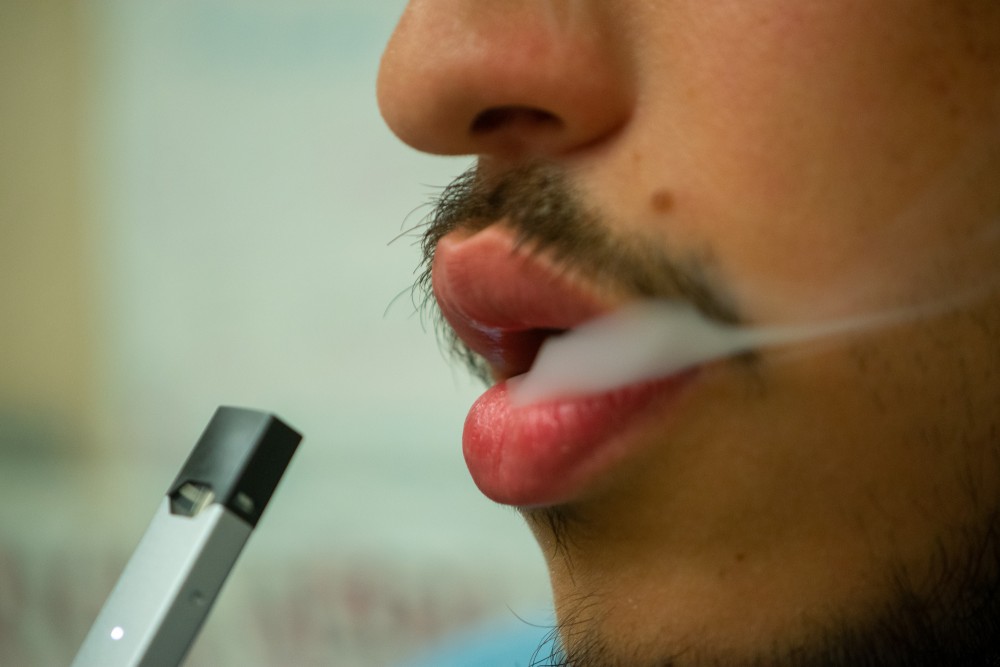Krista Olson stands in the smoking section outside of University of Maryland’s McKeldin Library, holding a lit cigarette between her fingers. Her e-cigarette sits ready for use in her pocket as she takes a drag of something she’s trying to quit.
Olson, a senior Spanish major, uses her e-cigarette to save a little money and help wean herself off cigarettes — and the fruity flavors that come with e-cigarettes help, she said.
“I switched to e-cigarettes after I started smoking,” she said. “I like cigarettes better, but the e-liquid definitely tastes better.”
[Read more: This UMD professor is researching Russian disinformation ahead of the midterm elections]
But for other e-cigarette users, the fruity flavors are the reason they get addicted to nicotine in the first place, according to a new public health school study.
The study, which was released earlier this month, said 8 percent of young adults in the United States from the ages of 18 to 24 used e-cigarettes in the preceding month.
69 percent of those users chose vapor products with sweet flavors — such as cherry, cake or mango — Julia Chen, the study’s lead researcher, wrote in the study.
Though e-cigarettes were initially developed to wean people off of cigarettes by slowly decreasing nicotine levels, Chen said the taste of some vapor products, particularly mint and tobacco flavors, attract young adults who are not already cigarette smokers and get them addicted to nicotine.
Junior government and politics major Spencer Blumberg uses e-cigarettes for that purpose — to quit smoking cigarettes.
“When I started JUULing, I bought the mint pods and still use them to this day,” Blumberg said. “With [the JUUL] I’ve never really had the inkling to use [cigarettes].”
[Read more: With a $7.7 million grant, UMD researchers are leading a study on ticks]
Chen said this increase in e-cigarette use stems from peer influence and social media pressure.
“[Younger people] see them on social media, for example Instagram has many many channels about JUULs, and after that they’ll maybe go pick one up,” Chen said. “It’s because [e-cigarettes] are also considered a cool behavior, and they want to impress their peers and follow a trend.”
Carly Polejes, a sophomore criminology and criminal justice major, said she sees this trend in her peers’ behaviors, and thinks peer influence encourages others to buy e-cigarettes.
“It’s the status quo, if everyone has them and you’re out and you try one and you keep trying it, it turns into you’re always using your friends’ and then you just get one,” she said.
Chen hopes that this study will help lead to more messaging about e-cigarette dangers, which include an increased risk for cigarette smoking and exposure to chemicals that cause cancer later in life, she said.
E-cigarettes have harmful chemicals and nicotine and can harm developing brains, create addictive tendencies and hurt respiratory health, according to the U.S. Surgeon General.
With the release of this study, Chen hopes that different groups will be able to create public health programs to lower the use of e-cigarettes in previous non-smokers.
“We need to have corresponding public health messages and interventions to target high risk groups and tell them e-cigarettes are not healthy for you,” she said.



